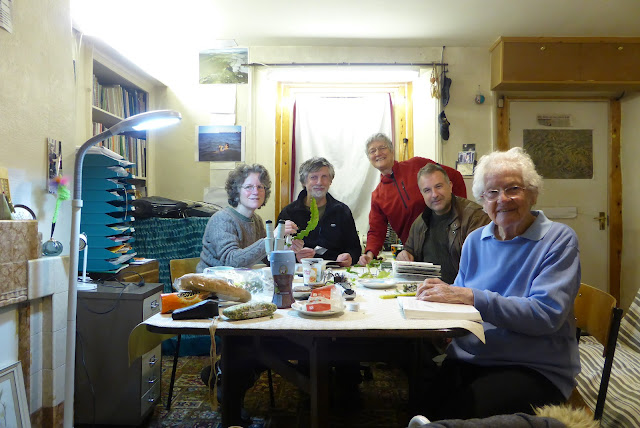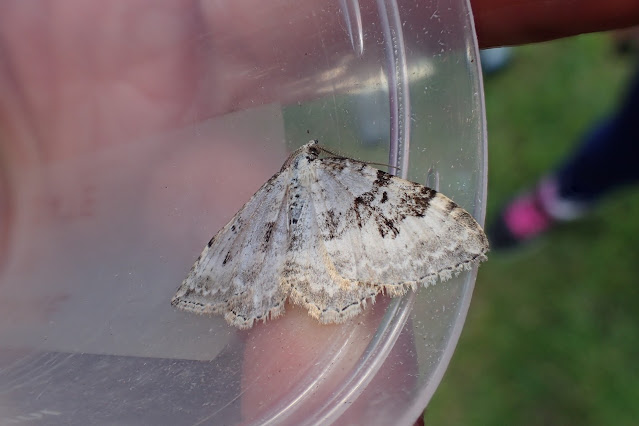
20 Feb 2018 - Coffee Morning at St John's Settle
Doris Cairns.
I first knew Doris when she lived in Ingleton, but these last two years she lived in a Yorkshire Housing bungalow at Mill Close, Settle. Before Ingleton she lived near Tosside and before that she worked in Australia, having sailed out on one of the £10 tickets.
Some of you will have seen her two books:" Wildlife in a Churchyard (Giggleswick) and "Wildflowers of the Churchyards" (Ingleton and Chapel Le Dale)
Doris studied biology at Manchester University and attended a university field course at Malham Tarn Field Centre in 1951. She showed me a picture of the group there. One of her university teachers was Peter Greig-Smith - who 25 years later was my PhD supervisor. Small world!
She taught games and PE in the UK. Then she worked in Australia for many years teaching children, including (which she particularly liked) in the Island schools of the Torres Strait, between Cairns in the north of Australia and Papua New Guinea. (She has a book about that too). She gained her pilot's licence. Her father was in the RAF and was in a team that made the first journey flying the length of Africa from north to south stopping at various places en route. Doris had a holiday once following this route. She started writing her memoirs but only got part way through. Her good friend Cynthia Hardyman has typed up the first 53 handwritten pages.
The funeral will be at St Alkelda's Church, Giggleswick at 11.30am on Thursday 19 June.
 |
| Coffee Morning at Settle Methodist Church with Revd Stephen Dawson and Revd (Julie Cox.) |
 |
| Mon 7 April 2025 - A Monday Lunch at the Hub/Public Living Room held at Settle Quakers, Isabel came for the Folly to show some of the old items held there. Doris on right. |
 |
| Doris (right) with Mary Taylor from Bentham Walking Group and Revd Timothy Fox at Low Bentham churchyard - 10 Oct 2024 |
 |
| Talking with Bishop Nick at Holy Ascension, Settle, 27 April 2025 |
 |
| 4 May 2025 Horton Lambing Service |
 |
| Judith, Cynthia, Doris, Viv enjoying coffee in Keighley - A very happy day at Keighley on Fri 9 May 2025 when Doris could chat with Viv - about old times when they sailed out to Australia together. |
 |
| Fri 9 May 2025 -Cynthia and Doris visit Cynthia's garden |
 |
| 14 Feb 2018 Craven Conservation Group workshop using a vegetative key (Poland) for identifying plants |














































